Pest and Disease Control
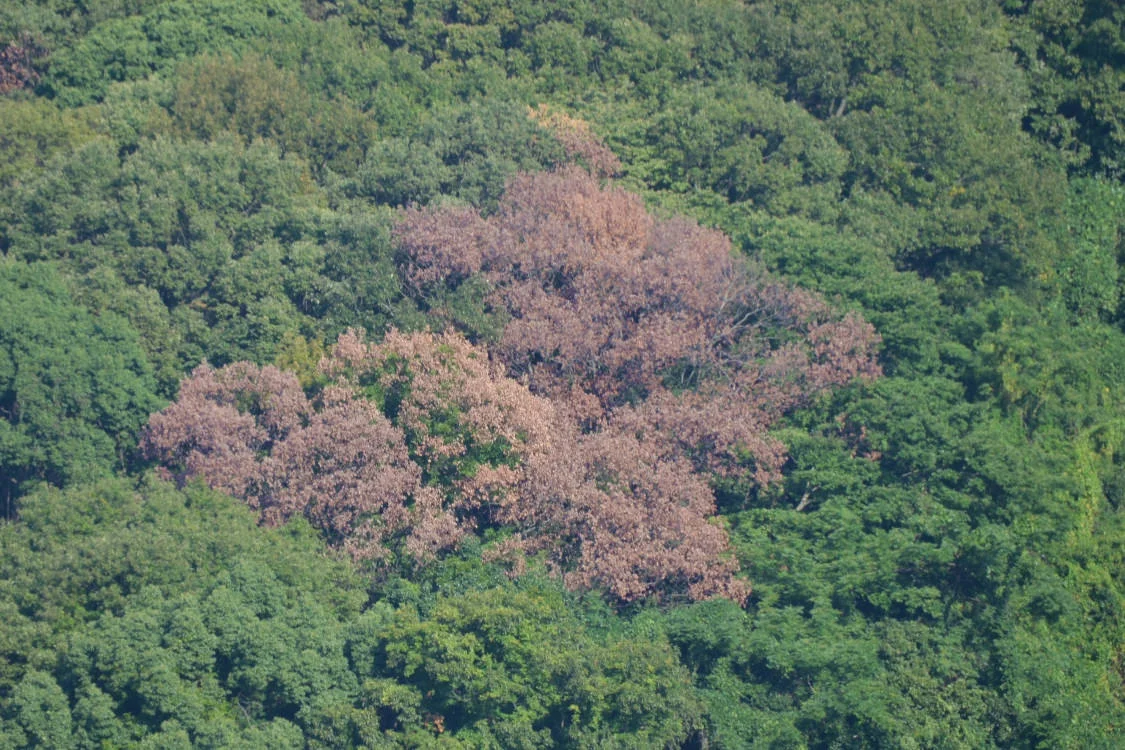
Oak Trees Withering
In forests across Japan, oak withering is causing sudden die-offs of konara and Japanese Oaks in the peak of summer. Oak withering is a disease that affects trees in the beech family, such as konara and Japanese Oaks. It is caused by the Raffaelea quercivora fungus, which is carried by the oak ambrosia beetle.
This beetle is a native species in Japan that plays a natural role in forest regeneration. It targets mature konara and Japanese Oaks, causing them to wither and die, and aiding in the natural renewal of the forest ecosystem.
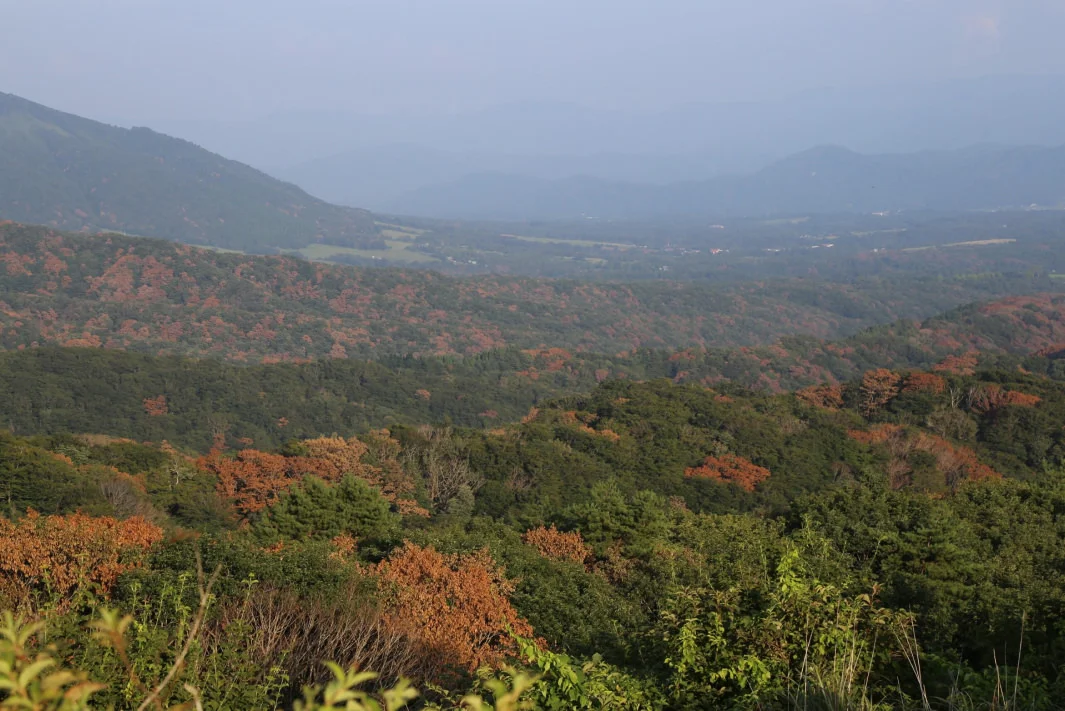
The forests currently affected by oak withering are not natural broadleaf forests. Many were originally man-made woodlands, where oak species were planted for charcoal and firewood production. These forests were managed on a 10–20-year cutting cycle, preventing the trees from growing especially tall.
However, the widespread adoption of electricity and gas drastically reduced the demand for charcoal and firewood. As a result, these trees were left unmanaged and grew into giant oaks, creating an unnatural situation. For the oak ambrosia beetle, this has meant an abundance of large trees in the beech family to target and kill, leading to the widespread oak withering outbreaks seen across Japan today.
When oak withering first appears in a region, it often causes alarm. However, not all trees die, and in many cases, the overall impact is comparable to a controlled thinning process. Studies have shown that, after infected trees die, other tree species grow in their place, ultimately enhancing forest diversity.
That said, trees infested by the oak ambrosia beetle become unsuitable for timber use. To mitigate large-scale losses, we take proactive measures, such as harvesting large trees before major outbreaks to make effective use of the wood. This is followed by replanting a diverse range of seedlings in areas where giant oaks have been removed, fostering a more resilient and diverse forest ecosystem.
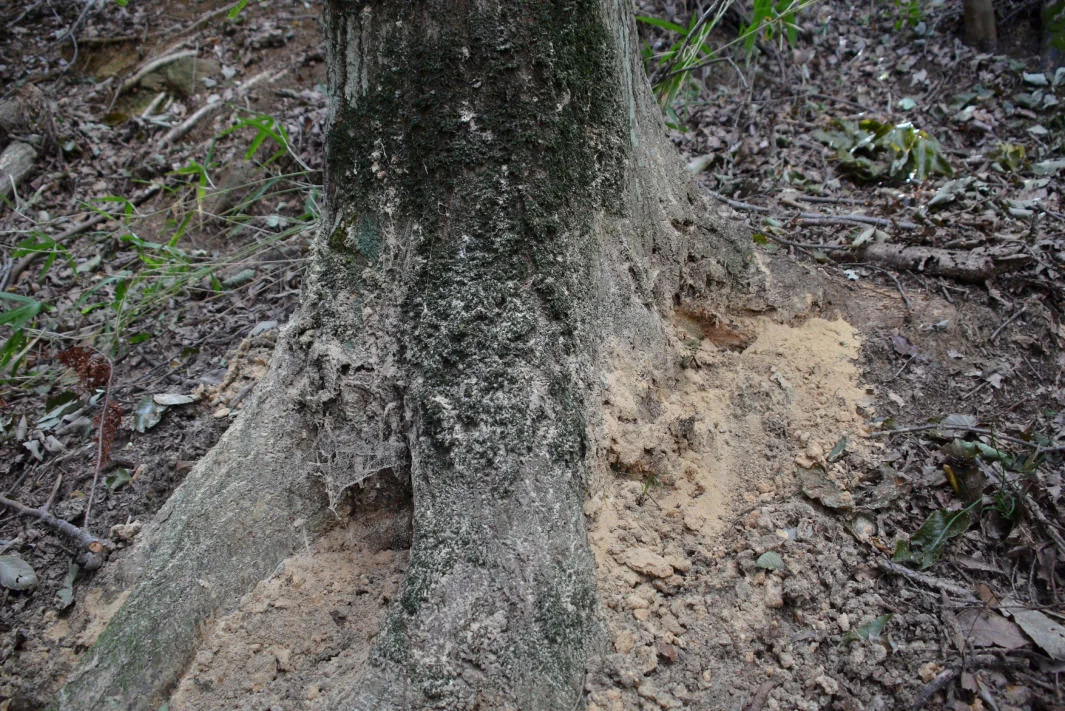


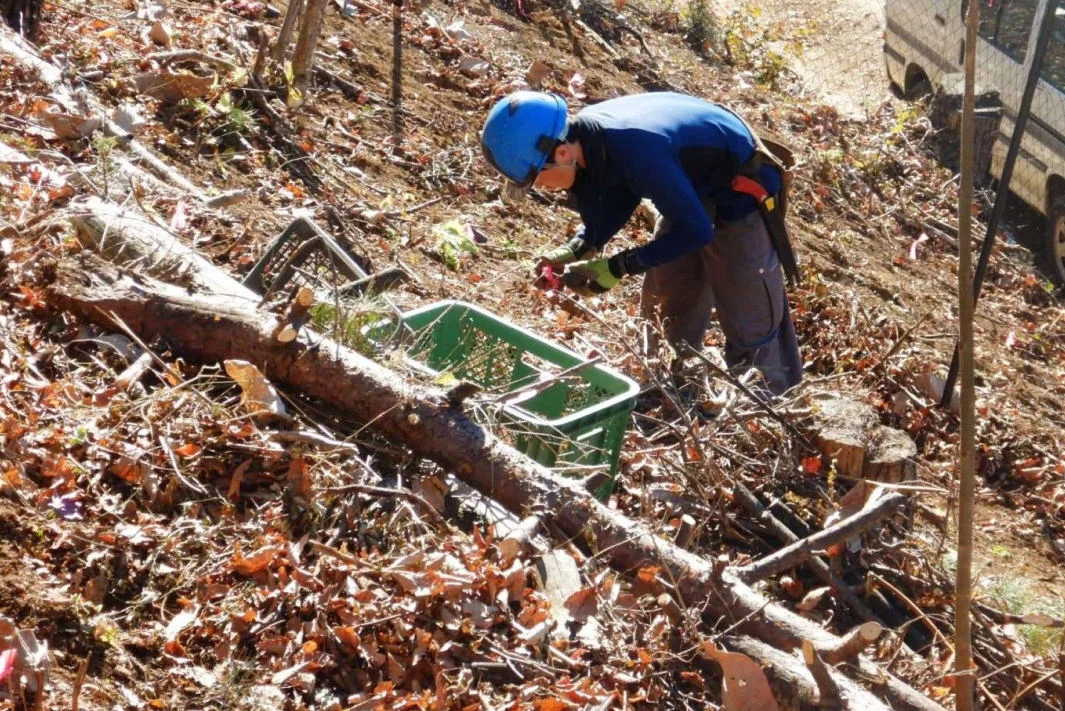
In some cases, sticky tape is wrapped around trees (with the sticky side facing the tree) to trap adult oak ambrosia beetles trying to emerge the following year. This method can be effective when it is essential to prevent further damage.
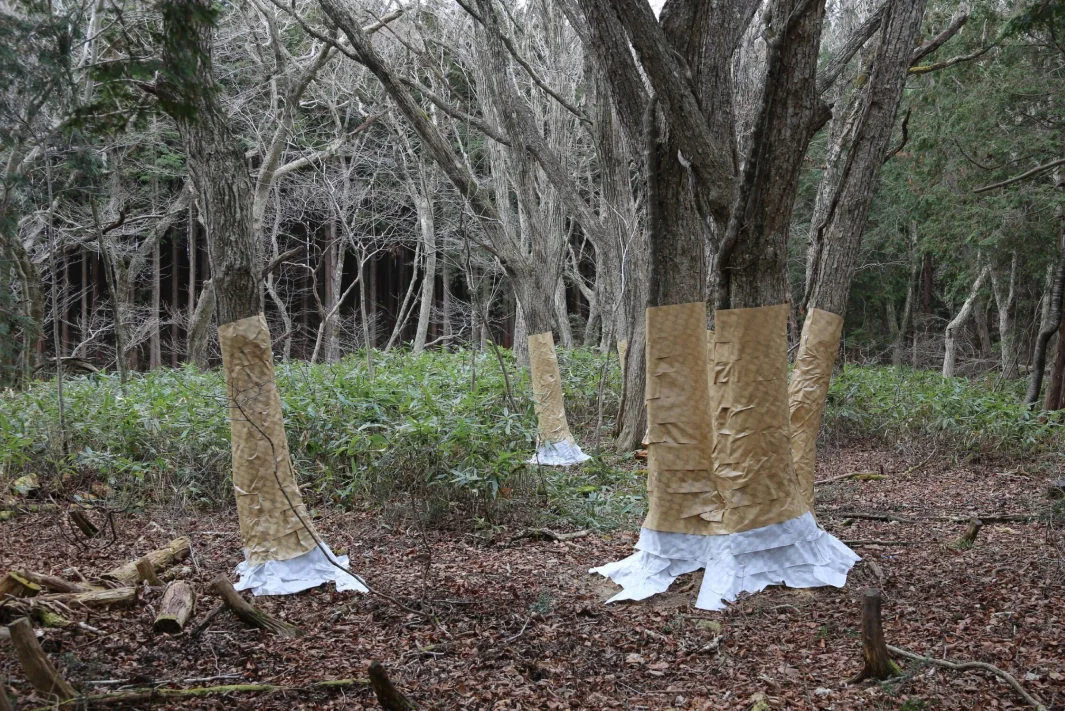
Experts involved in this Initiative

Tamotsu Hattori
Emeritus Professor, University of Hyogo
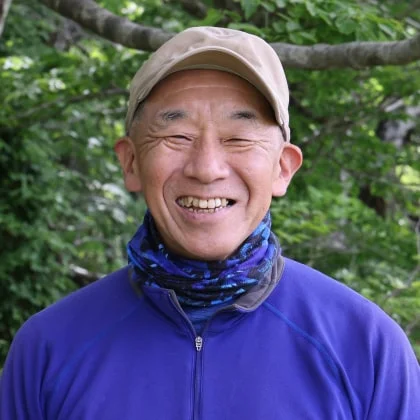
Yoshiyuki Hioki
Specially Appointed Professor, Tottori University
Pine Wilt
Pine wilt is caused by an invasive species, the pine wood nematode, which originated from North America. Since Japanese pine trees have no natural resistance to this nematode, once infected, they rapidly wither and die.
Pines are considered pioneer trees, capable of quickly establishing roots and thriving in barren lands, such as post-collapse sites and wastelands, where other trees might struggle to grow. As the soil gradually improves, other trees begin to thrive, and over time, the landscape transitions into a broadleaf forest. At this stage, pine trees naturally lose their role as pioneers, giving way to other species and eventually dying out.

This natural succession process is not problematic. However, when pine wilt disease spreads before successor trees are established, all the pines die, leaving barren, exposed mountains.
To address this issue, we take measures such as planting resistant pine seedlings in areas where no successor trees have taken root, as well as sowing seeds of resistant pine varieties to restore affected areas.
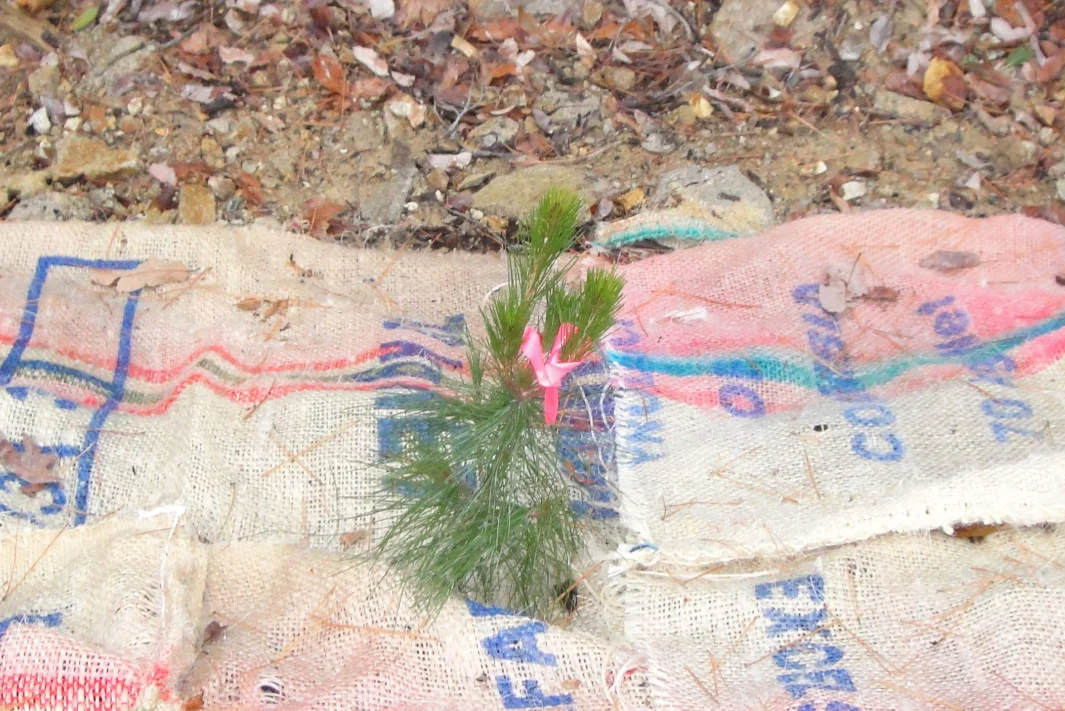
Measures Against Pine Wilt (Japanese Only)
Release Date: December 2014
Learn about our activities related to implementation
Research Conducted with Experts
By combining field investigations with simulations, we ascertain the current health of the forest and forecast its future.
Planning Based on Forest Surveys
Vision Development
In our Natural Water Sanctuaries, conservation and restoration efforts are taken with a long-term perspective spanning 30 to 100 years. The foundation of this effort is the development of a vision.
Since forest conditions vary significantly from one location to another, thorough surveys are conducted to examine both past developments and the current situations. The surveys involve a wide range of tools and information, including topographic maps, aerial photographs, existing vegetation classifications, and the characteristics of individual plant communities*.
Based on the survey results, discussions are held with vegetation consultants, forestry experts, and other specialists to identify issues for each plant community. Subsequently, multiple solutions are proposed for each identified issue, and maintenance policies are determined accordingly. By updating each vision every 5 to 10 years, the Sanctuaries undergo continuous evaluation and improvement.
A community is a group of plants that inhabit the same location.
Experts involved in this Initiative

Regional Environmental Planning, Inc.

Institute of Rural and Urban Ecology Co., Ltd.

MORISHO LLC

AI-Shokubutsu Landscape Planning Office
Implementation of Forest Management Plans
We carry out restoration and maintenance activities in collaboration with professionals from various fields.
Improvement Through Ongoing Surveys
The plants and animals living in forests are constantly changing. In our Natural Water Sanctuaries, ongoing surveys are conducted to inform continuous improvements.
Examples of Our Activities
When working with nature, things don't always go as planned. That's why ongoing surveys after forest maintenance are crucial. Sometimes, results exceed expectations, while other times, efforts end in complete failure. Here are some examples of challenges and discoveries encountered during our activities.
These Deer Weren't Here Last Year
In our Natural Water Sanctuary Okudaisen, 2 to 3 meters of snow accumulates during winter. Because of this, deer had never been seen in the area until recently. However, signs of deer feeding on grass and shrubs started to appear. In response, cameras were immediately set up, revealing a significant presence of deer.
The original maintenance plan for our Natural Water Sanctuary Okudaisen was designed for a forest without deer. Until recently, this sanctuary stood out as an exceptional example where biodiversity thrived and maintenance results were highly effective.
Unfortunately, the unexpected arrival of deer meant the plan had to be completely revised. The first step was to fence off key areas. However, standard metal fences would be damaged as melting snowpacks move during the spring thaw. To address this, we are taking an emergency measure of installing a resin net immediately after the snow begins to melt, and then laying the net flat on the ground when the snow starts to accumulate.
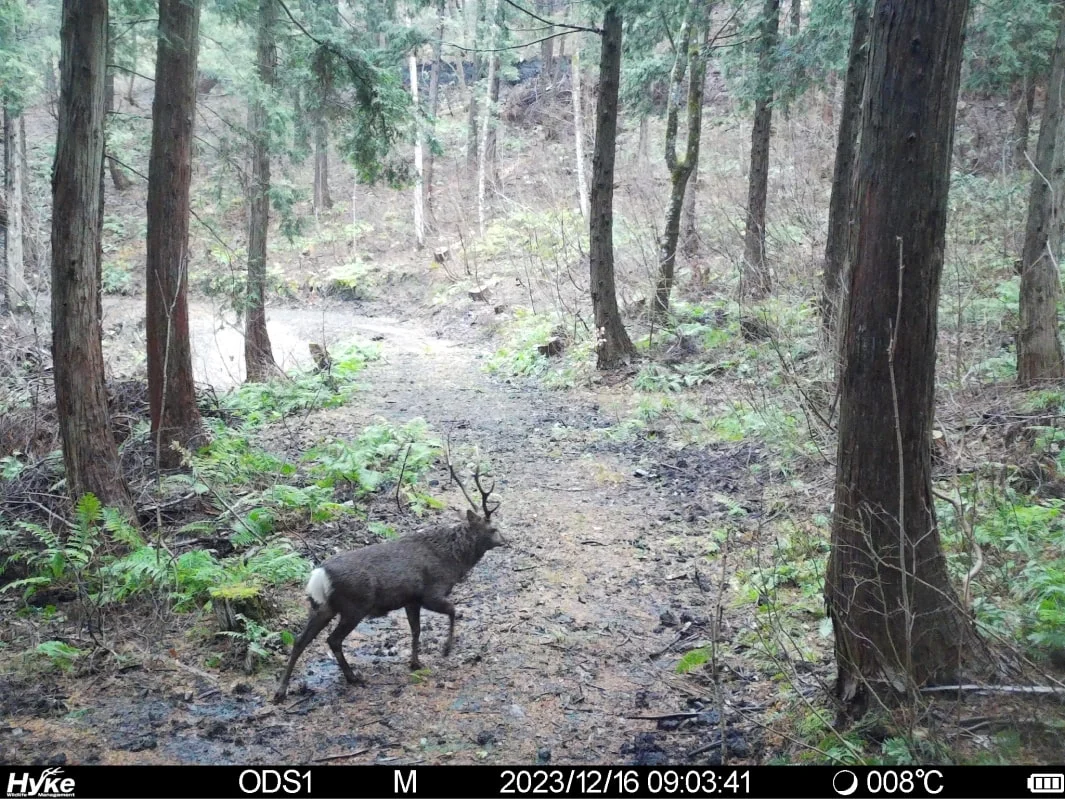
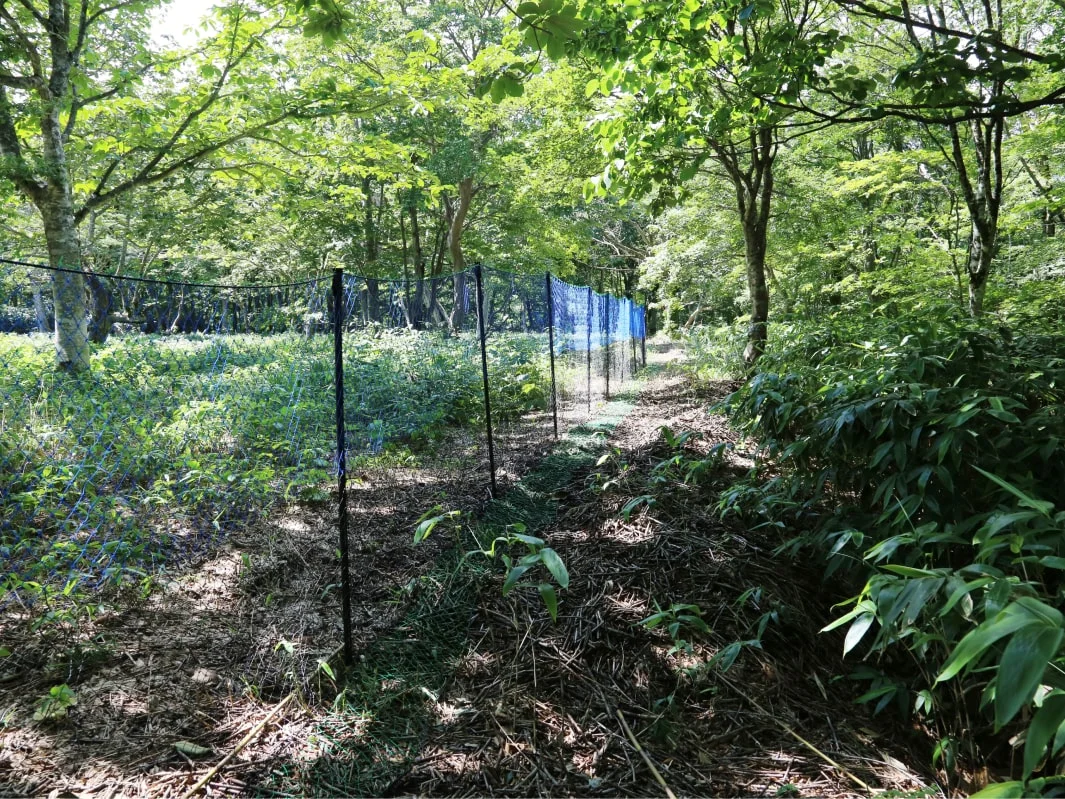
A Mountain Made of Pumice?
When the agreement was signed to create our Natural Water Sanctuary Shizuoka Oyama, the most surprising aspect of the forest management challenge was the fragility of the mountainside. The majority of the existing logging roads had been severely eroded by heavy rains, leaving deep trenches throughout.
In fact, this mountain is composed of alternating layers of volcanic ash from past eruptions of Mount Fuji and small pumice stones called scoria. When roads or other clear-cuts expose the ground, the pumice layer is quickly eroded by water.
As a result, we decided to turn unnecessary logging roads back into forest. Unfortunately, these areas are also frequented by many deer. So, on the flat roadbeds we planted mitsumata (Oriental paperbush) and susuki (Japanese silver grass), which are less palatable to deer. Although susuki is generally disliked by deer, for some reason they like to pull out the young plants. So, we are covering them with agricultural bird netting until they are well-established. The broadleaf trees planted on one side are being protected as individual trees.
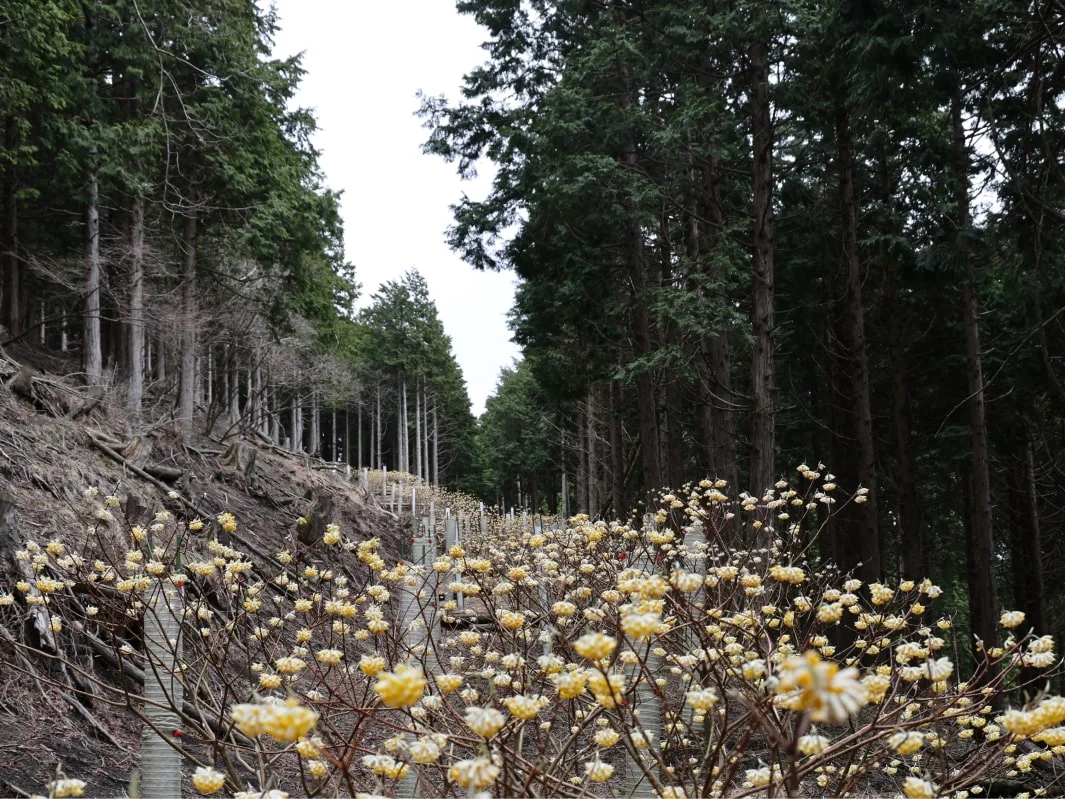
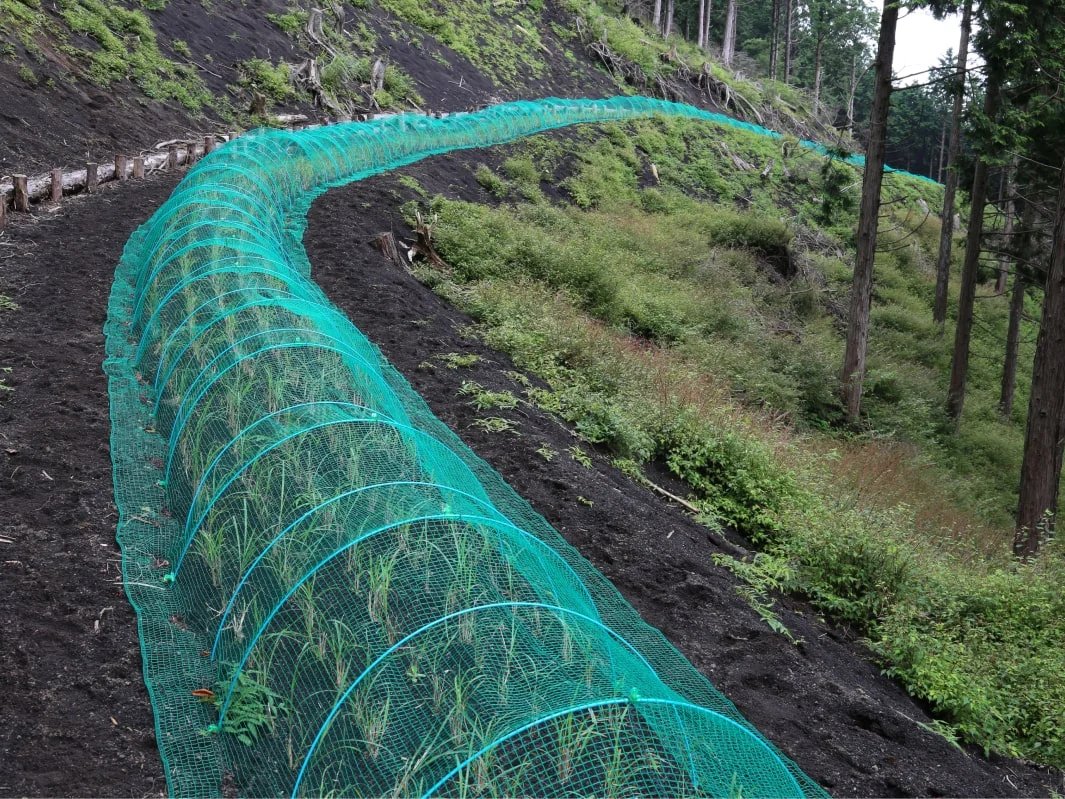
New Discoveries During Forest Management
As we continue to repeat our process of R-PDCA (research, plan, do, check, and act), we sometimes make unexpected discoveries. Here are some of the surprising discoveries we have made about wildlife during our forest management activities.
Deer Feeding Almost Exclusively on Fallen Leaves During Winter!
As part of our Natural Water Sanctuary Project Chichibu with the Univ. of Tokyo, we conducted DNA analysis of deer droppings to investigate what they eat in different seasons. The results were astonishing.
During winter, the primary food source for deer turned out to be maples and dogwoods. However, both of these tree types are deciduous. This means in winter, there are no green leaves available to eat. Later, using footage from fixed-point cameras we confirmed that deer herds are feeding on fallen leaves. As you can see, the deer were in good condition and showed no signs of malnutrition.
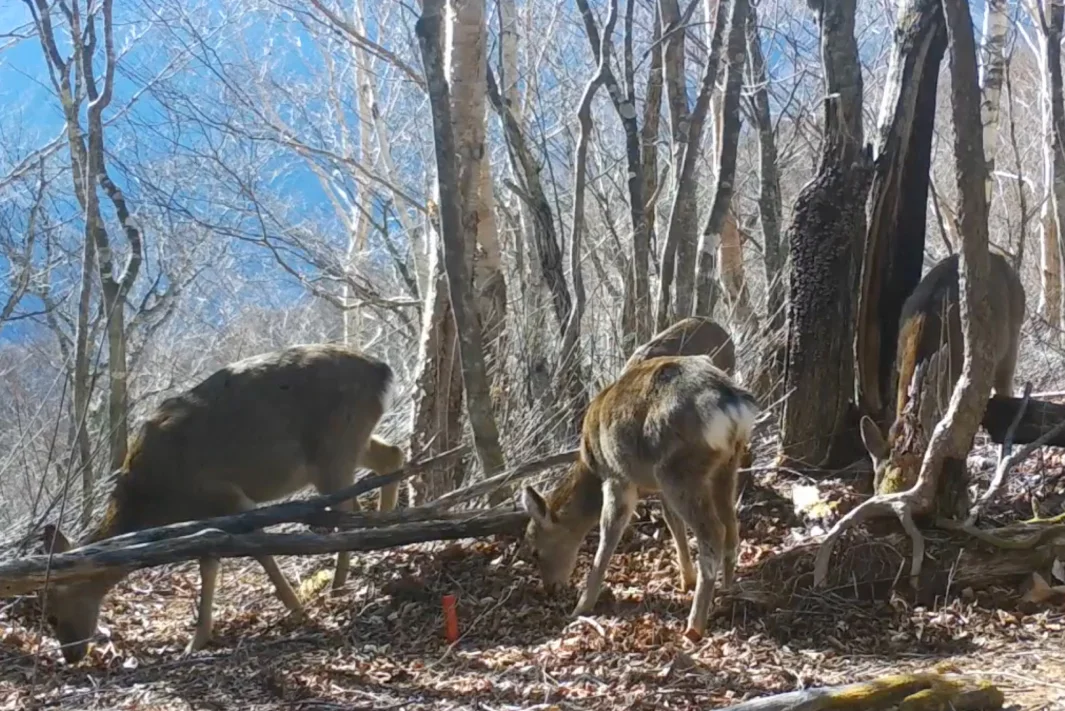
If deer can survive on fallen leaves, then their food resources are virtually limitless. This discovery invalidates the once-optimistic assumption that if deer eat up all the undergrowth, they will eventually starve and their numbers will decline. We are now developing new strategies to protect forest biodiversity.
Experts involved in this Initiative

Hirao Toshihide
Lecturer, The University of Tokyo
A Possible Solution for Invasive Bamboo?
In our Natural Water Sanctuary Tennozan, a logging road was built alongside a bamboo grove. To protect the road’s embankments (norimen*1), we planted mitsumata (Oriental paperbush) —a species that deer do not eat.
Then, something unexpected happened. Along the sides of the road where mitsumata was densely planted, bamboo shoots stopped sprouting. It appears that mitsumata has an allelopathic effect*2 that inhibits bamboo roots. If this proves correct, it could be a breakthrough solution for controlling invasive bamboo across Japan.
- Norimen refers to the slopes created on both sides of a logging road.
- Allelopathy is the phenomenon where chemicals released by one plant influence the growth of other plants or microorganisms.
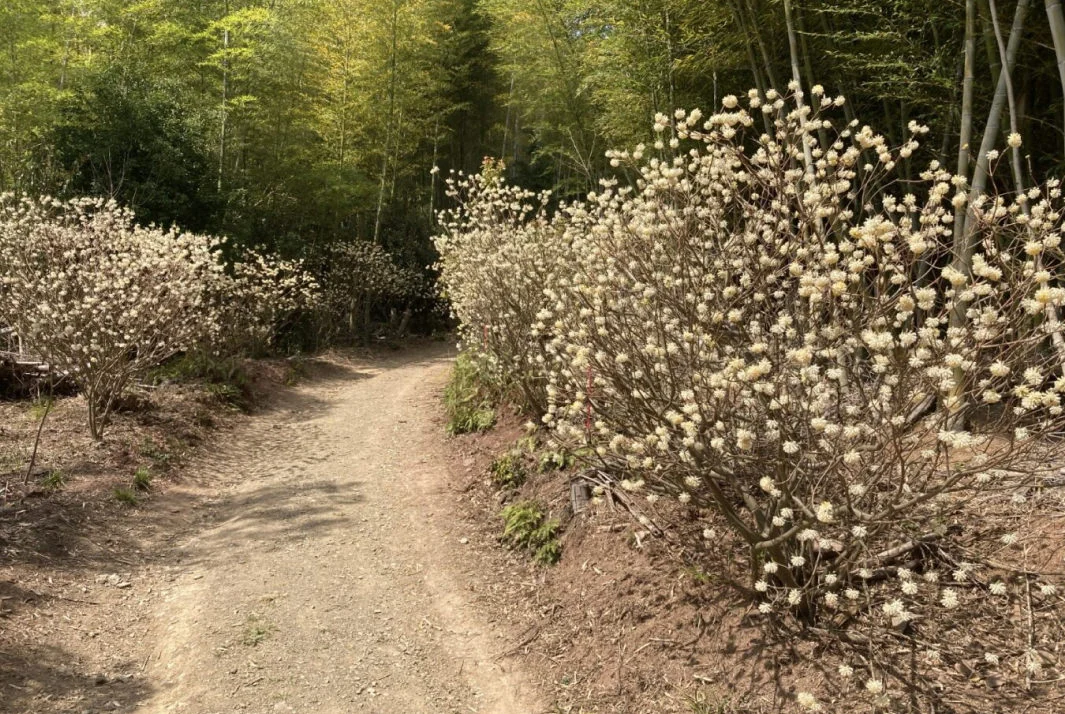


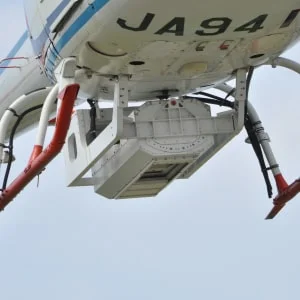
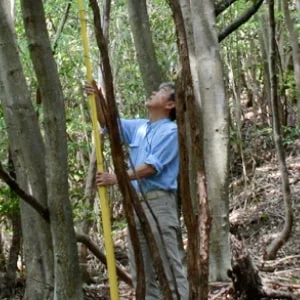
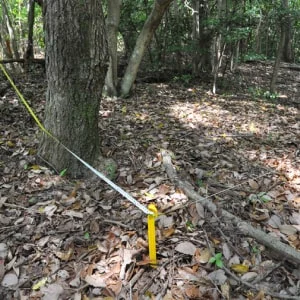
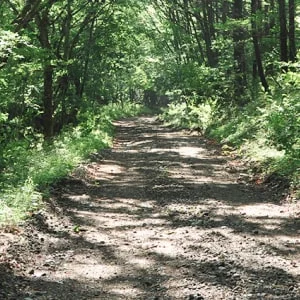
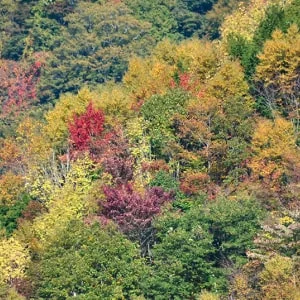
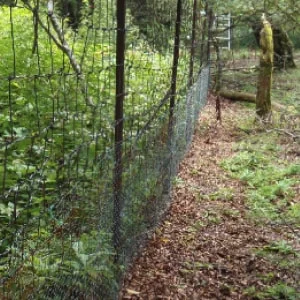
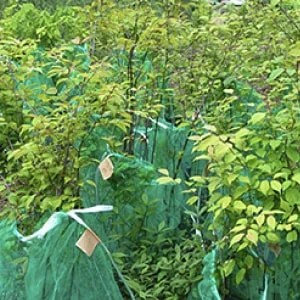
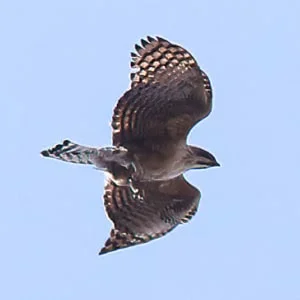
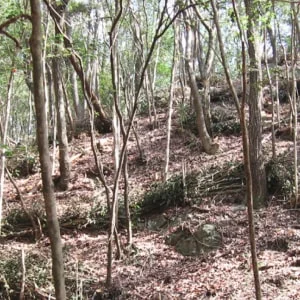
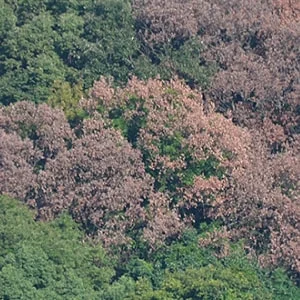
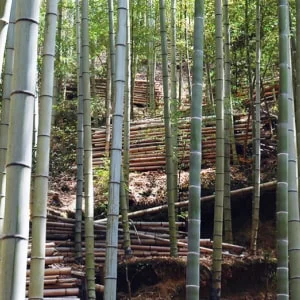

 Home
Home Initiative Policy and Structure
Initiative Policy and Structure Living Things in the Natural Water Sanctuaries
Living Things in the Natural Water Sanctuaries Dedication to Water
Dedication to Water Natural Water Sanctuaries
Natural Water Sanctuaries  Natural Water
Natural Water  Initiative History
Initiative History